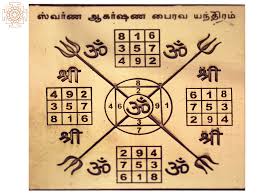Yantra, a profound symbol in Hindu and Buddhist traditions, embodies the synthesis of sacred geometry and spiritual energy. Rooted in ancient wisdom and symbolism, yantras are geometric diagrams that serve as powerful tools for meditation, manifestation, and spiritual growth.
The Essence of Yantra
At its core, a yantra is a visual representation of cosmic truths and principles. Derived from the Sanskrit word ‘yan’, meaning instrument or machine, and ‘tra’, meaning liberation, yantras are instruments for liberation from the cycle of birth and death. They encapsulate intricate patterns of symbols, often centered around a deity or a particular energy.
The design of a yantra is not arbitrary; each line, shape, and symbol holds profound significance. The combination of triangles, circles, squares, and floral patterns within a yantra forms a blueprint of cosmic energies. These geometrical forms are not merely aesthetic but are believed to resonate with specific frequencies and energies that can be harnessed through meditation and ritual.
Origins and Evolution
Yantras trace their origins to ancient India, where they were initially developed as aids for meditation and spiritual practice. Over centuries, their use spread across Hinduism, Buddhism, and Jainism, each tradition imbuing yantras with unique symbolism and purpose.
In Hinduism, yantras are associated with various deities and cosmic forces. For example, the Sri Yantra, a complex geometric pattern of interlocking triangles and circles, is revered as the mother of all yantras. It represents the goddess Lalita Tripurasundari and symbolizes the cosmic union of masculine and feminine energies.
Buddhist yantras, known as mandalas, serve as maps of the spiritual universe. These intricate designs are use in meditation to visualize and attain enlightenment. Mandalas often feature concentric circles and intricate patterns that guide practitioners through stages of spiritual development.
The Science of Sacred Geometry
Sacred geometry forms the backbone of yantra design. It is the study of geometric forms and their symbolic meanings across cultures and religions. The shapes and proportions used in yantras, such as the Fibonacci sequence, golden ratio, and fractal patterns, resonate with universal principles found in nature and the cosmos.
The triangle, square, circle, and lotus are fundamental shapes in yantra construction. Triangles represent the union of creation, preservation, and destruction – the three primary cosmic forces in Hindu philosophy. Squares symbolize stability and the physical world, while circles signify unity, completeness, and eternity.
Practical Applications and Rituals
Yantras are not merely static images but dynamic tools for spiritual practice. They are consecrate through rituals and mantras by qualified practitioners, imbuing them with spiritual potency. Once consecrated, a yantra becomes a focal point for meditation and invocation of divine energies.
Practitioners use yantras for various purposes, including meditation, healing, and attracting specific energies or qualities into their lives. Meditating on a yantra allows one to enter a state of deep concentration and connection with the divine. The visual complexity of the yantra helps to quiet the mind and awaken higher consciousness.
Meditation and Spiritual Growth
Meditation with yantras is a transformative practice that enhances spiritual growth and inner peace. By focusing on the geometric patterns and symbols within the yantra, practitioners align themselves with higher frequencies of energy and consciousness.
The Sri Yantra, for instance, is reveret for its ability to unlock latent energies within the practitioner. Meditating on this yantra is believe to awaken spiritual intuition, attract abundance, and dissolve obstacles on the path to enlightenment.
Yantras in Contemporary Context
In modern times, yantras continue to be relevant tools for spiritual seekers around the world. Their timeless wisdom and universal appeal transcend cultural boundaries, making them accessible to people of diverse backgrounds and beliefs.
Yantra meditation and practices have found resonance in alternative healing modalities and wellness practices. They are often use alongside yoga, mindfulness, and energy healing techniques to promote holistic well-being and spiritual alignment.
Conclusion
Yantras are sacred instruments that bridge the gap between the material and spiritual worlds. Through their intricate designs and profound symbolism, they offer a pathway to deeper understanding, inner peace, and spiritual evolution.
Unlocking the mysteries of yantra involves more than mere contemplation of geometric shapes; it requires a journey into the essence of cosmic energies and divine consciousness. As humanity continues to seek meaning and connection in an increasingly complex world, the timeless wisdom of yantras offers a beacon of light and guidance towards spiritual fulfillment and harmony.
In essence, yantras are not just geometric diagrams but portals to transcendence – gateways through which seekers can unlock the mysteries of existence and discover the profound interconnectedness of all things.

